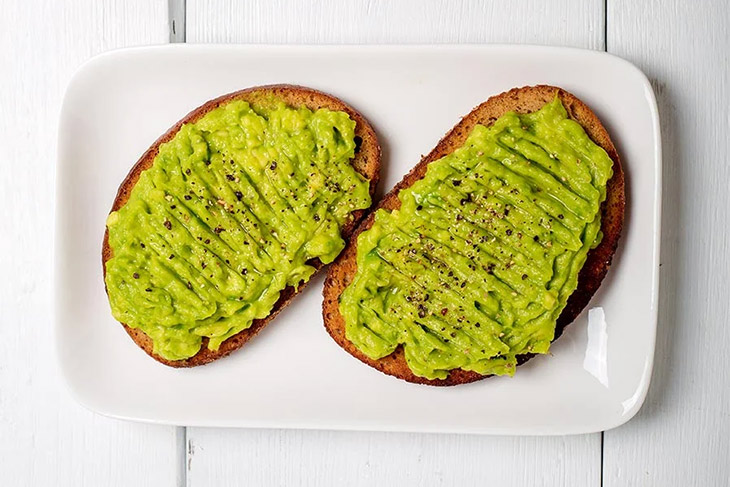What fatty foods are good for losing weight?

Despite the bad press that dietary fat has received over the years, fat actually play an essential part of any diet - even a weight loss diet.
Fat keeps us warm, protects our internal organs and stores energy for a rainy day. It also forms the basis of cell membranes and provides a very concentrated source of kilojoules – packing more than twice as many per gram as protein or carbohydrate.
Professor Manny Noakes, author of the CSIRO Total Wellbeing Diet, says cutting back on excess fat is a way of reducing kilojoules. “The key message is to choose healthy fats sources and not to be paranoid about fat. Also be aware that not everything branded low fat is a good choice – it may be high in kilojoules from other sources, like starches or sugars, so read the nutritional panel to be sure."
About 25-30% of your daily kilojoules will be derived from fat on the Total Wellbeing Diet, making it a moderate but not ultra-low fat diet. This is compared to the typical Australian diet, where 32% comes from fat. But when it comes to fats, some have more health benefits than others – so the trick is to learn which food sources of fat to choose and how much to have.
Know your fats
All fats are a mix of 3 different fatty acids – polyunsaturated, saturated and monounsaturated fatty acids. Unsaturated fats are important – they make our cell membranes fluid, allowing them to function correctly. Polyunsaturated fats include linoleic acid (in safflower and sunflower oils), fish oils and oils from seeds. Monounsaturated fats are found in olive oil, avocado and nuts and the oils derived from these foods. On the Total Wellbeing Diet small amounts of fats come from lean red meat, chicken, oily fish like salmon and low fat dairy products.
Another fat you’ve probably heard a lot about in recent times is omega-3 fat. These are a type of polyunsaturated fat and are important for healthy brain development and heart health. They play a vital role in every cell, tissue and organ in your body.
There two types of omega-3s - short-chain, aka alpha-linolenic acid or ALA, which come from plant sources (think leafy greens), chia seeds; and long-chain, aka eicosapentaenoic acid or EPA and docosahexaenoic acid or DHA. Long chain omega-3’s come from fish and seafood, particularly oily fish as well as lean meat.
For a recipe rich in omega-3s: Salmon, pea and dill frittata
Another essential polyunsaturated fatty acid we need to eat from food are the omega-6’s. We need a minimum of 1-2 g a day of an omega-6 fatty acid called linoleic acid, which is involved in the proper functioning of skin cells and lowers cholesterol. Good sources are safflower oil, sunflower oil, peanut oil, nuts and seeds.
"When choosing fats, unsaturated sources that are softer or liquid at room temperature are best choices as well as of course avocado, nuts and seeds,” suggests Manny.
Enjoying a wide variety of foods will also ensure that you receive enough essential fatty acids for overall good health.
For a recipe rich in omega-6 fatty acids: Apple and rhubarb crumble with honey, oats and hazelnuts (members only)
Which fats to limit
What you don’t need too much of is saturated fat – which we don’t actually need in our diet as the body makes all it requires. “However, there is no need to avoid saturated fat altogether and it is impossible to do so as all fats contain some saturated fatty acids. But lashings of butter, cream, lard and fatty meat and chicken will add lots of excess kilojoules to your diet and raise your blood cholesterol levels. Choose liquid oils, nuts, seeds, avocado and unsaturated spreads,” Professor Noakes suggests.
For a recipe rich in healthy fats: Chermoula lamb fillet with avocado and coriander salsa (members only)
Trans fatty acids are a type of monounsaturated fatty acid that behave like saturated fats and raise blood cholesterol, increasing the risk of heart disease. You’ll find them in negligible amounts in beef, dairy and they used to be in margarines. But food manufacturers in Australia have removed them from their products. They also used to be common in products like commercially available pastries, cakes and biscuits.
Cholesterol is another type of fat, more like a wax, though it is not an energy source – the body produces all that it needs to make cell membranes, sex hormones and bile acids. Cholesterol from foods such as meat and eggs has very little effect on blood cholesterol levels. Compared to what was once thought, eggs need not be restricted as part of a healthy diet and up to 6 to 7 eggs per week are perfectly fine.
Plant sterols are the plant equivalent of cholesterol – with one difference – they are actually good for you. Large amounts of plant sterols throw cholesterol out of the absorption packets that have arrived at the gut wall, ready to be taken up into the body. With less cholesterol in each packet, less cholesterol is absorbed.
Diets including lots of plant foods are higher in sterols, but to get a measurable effect on blood cholesterol levels, sterols must be eaten in higher quantities. In Australia, they have been added to some margarines and are also available in some milks. You need to eat about 20-25g a day of sterol-enriched margarine to experience an average of ten per cent reduction in blood cholesterol. Fat reduced sterol margarine can be included as part of the Total Wellbeing Diet to further boost cholesterol control.
Choosing your fats and oils
On the CSIRO Total Wellbeing Diet, you’re allowed three teaspoons of added fats/oils a day on the first level of the diet, which increases to five on the level three plan. This includes any liquid oil such as canola, olive or sunflower oil. This (at the first level) may take the form of:
- 3 teaspoons oil or soft margarine (or 6 teaspoons light margarines)
- 3 teaspoons curry paste in canola oil
- 60 g avocado
- 20 g nuts or seeds
